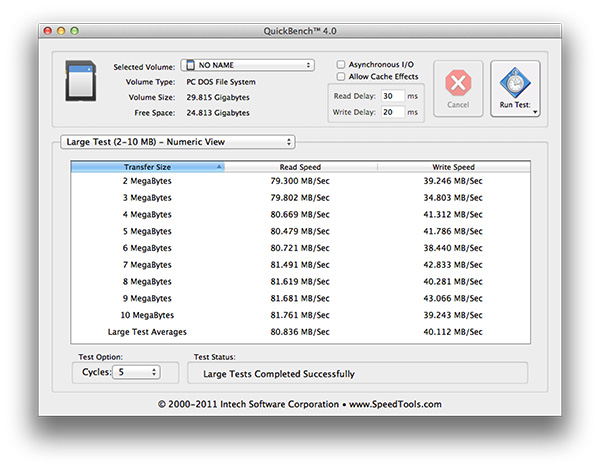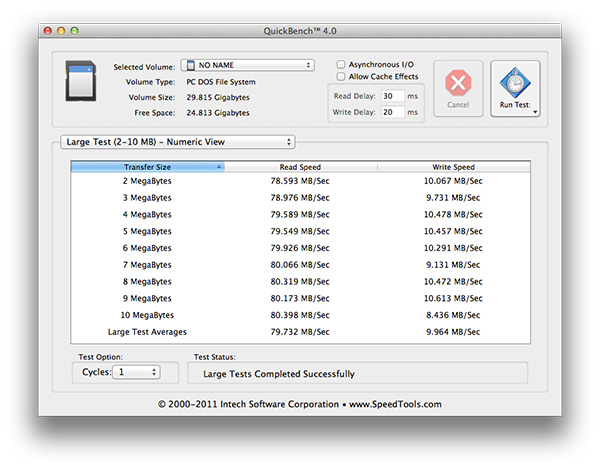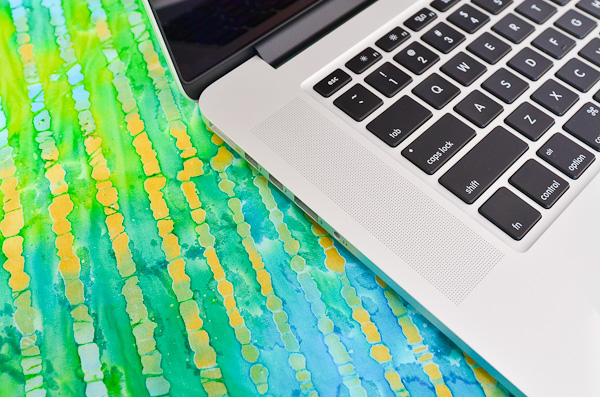The next-gen MacBook Pro with Retina Display Review
by Anand Lal Shimpi on June 23, 2012 4:14 AM EST- Posted in
- Mac
- Apple
- MacBook Pro
- Laptops
- Notebooks
WiFi Performance
The next-gen MacBook Pro is equipped with a decidedly this-gen wireless stack. In other words it uses the same 3x3:3 WiFi solution that was present in the 2011 MacBook Pro and is present in the non-Retina 2012 MacBook Pro as well: Broadcom’s BCM4331. The wireless behavior characteristics are a bit different since this is a physically different chassis, but we’re still dealing with a 3-stream 802.11n solution - not 802.11ac. All three antennas are located in the Retina Display’s housing.
We have seen Apple be conservative with component choices in the past. Deciding to stick with Samsung’s 45nm LP process for the A5X instead of embracing 32nm LP sooner with the 3rd gen iPad is one example that comes to mind. Like a good silicon company Apple appears to mitigate risk in design by sticking with known-good components wherever possible. Major changes to the industrial design are typically paired with comparatively minor silicon changes, and other components are kept as static as possible so long as they don’t overly compromise experience. While 802.11ac dongles and routers are just arriving today, Apple likely froze the Retina MBP’s wireless configuration quite a while ago. Rather than be caught shipping potentially unratified hardware, Apple went the safe route and stuck with 802.11n.

That’s not to say Apple’s wireless implementation is bad. The 15-inch MacBook Pro has been one of the best behaved notebooks on wireless that I’ve had the pleasure of using. The MacBook Pro with Retina Display is no different. Just like before, the best case negotiated physical rate is 450Mbps when paired with a 5GHz 3x3 access point. Unobstructed, within a couple of feet of the AP, I measured as much as 230Mbps to the Retina MacBook Pro. I tested at three different distances from the AP, through walls and on both 2.4GHz and 5GHz bands. Overall performance seemed comparable to the standard 15-inch MacBook Pro, although it’s definitely faster in some areas and slower in others.
| Location 1 | Location 2 | Location 3 | |
| 2011 MacBook Pro (2.4GHz) | 124.0 Mbps | 12.6 Mbps | 61.6 Mbps |
| Retina MacBook Pro (2.4GHz) | 117.9 Mbps | 87.6 Mbps | 44.0 Mbps |
| 2011 MacBook Pro (5GHz) | 186.8 Mbps | 154.6 Mbps | 24.7 Mbps |
| Retina MacBook Pro (5GHz) | 227.7 Mbps | 156.8 Mbps | 33.7 Mbps |
The second test location consistently performed poorly on the 2011 MBP, only on 2.4GHz however. For the most part there were no real surprises otherwise.
The SD Card Reader
It was our own Brian Klug who clued me into the horrible behavior of the 2011 MacBook Pro’s SD card reader. Depending on the SD card used, the integrated SD card reader either performed admirably or was the most frustrating part of the Mac experience. Out of the three SD cards I frequently use: a Patriot LX series card, a Transcend and a new UHS-I Patriot EP Pro, only the Transcend card actually works remotely well with the 2011 chassis. Even then, it’s not perfect. I usually have to insert and remove the card at least once before the reader will recognize it. The LX and EP Pro on the other hand are measurably worse. To get the EP Pro to work in the 2011 MBP’s reader I usually have to push the card in then apply upward or downward force to the exposed edge of the card to get it to read properly. Even then it’ll usually disappear from OS X or be present but read at bytes per second. I doubt this is the fault of the card itself but rather the latest example of incompatibility with the horrible SD card reader in last year’s MacBook Pro.
At least with the cards I’ve tested, the Retina MacBook Pro exhibits none of these issues. Over dozens of insertions I had no issues reading from or writing to all three of these cards, including the problematic ones. I ran a Quick Bench test on the EP Pro as it’s the fastest of the lot and came away with reasonable performance as well. Roughly 80MB/s reads and 40MB/s writes. The numbers are shy of Patriot’s 90/50 spec but quite good.
One of the times I was able to get the EP Pro working in the 2011 MacBook Pro I managed to squeeze in a single Quick Bench run. Read performance was almost identical at 80MB/s, but write performance was far lower at only 10MB/s:
Shortly after the test completed I could no longer write to the drive in the 2011 MBP so I suspect the card reader was acting up again. Needless to say, if you like using SD cards with your MacBook Pro the Retina Display model appears to be much better. That’s not to say there couldn’t be other incompatibilities, but in everything I tested it looks like this problem is finally fixed.
Better Speakers and Dual Mics
Apple is proud of its new speaker design in the Retina MacBook Pro. There’s not a whole lot you can do for tiny laptop speakers but despite shrinking the overall volume of the chassis, Apple has managed to deliver much better sound out of the new speakers in the rMBP. Like most of the upgrades to the next-gen MacBook Pro, you really need to do an A/B comparison to appreciate the difference. And keep your expectations in line with reality, a good set of external speakers are always going to sound better. With that said, the new speakers definitely deliver a fuller, more rich sound than their predecessor. You can still tell you’re listening to some form of integrated speakers, but now they sound distinctly less like they’re coming from a inside a notebook.
In preparation for Mountain Lion's arrival with dictation support, Apple outfitted the next-gen MacBook Pro with dual microphones in order to better focus on your spoken voice and not on background noise. In practice the new mics work reasonably well, rejecting moderate volume background noise. Loud music nearby will still cause interference and as always, accurate dictation requires more than just good quality source audio to get right.













471 Comments
View All Comments
seapeople - Sunday, June 24, 2012 - link
Wow, is that the Sony everyone here has been harping about "outdoing Apple" years ago?Reading that review basically says that while the general specs of that Sony are outstanding, every other possible aspect of user experience (keyboard, hinge design, trackpad, thermals, and noise) is completely terrible.
Oh, and it looks like it costs more than the rMBP and comes loaded with bloatware.
There's a reason that didn't get an Editor's choice award, and it's not some great conspiracy...
OCedHrt - Monday, June 25, 2012 - link
Not really. You can buy it without the bloatware, you just need to select Windows Pro. They got a review unit from Sony, and Sony shipped them their "consumer" version which is loaded with bloatware (although I agree, that is even more reason to not have bloatware).The hinge is by design and something Sony engineers are quite proud of. Not everyone likes it when something is different, especially when it comes to keyboards.
Simply read the comments (http://www.anandtech.com/Show/Index/5530?cPage=5&a... and you can see only the reviewer had an issue with the hinge that he couldn't even explain very well.
I have been using the Z1 for 2 years now and the experience is awesome. It may just take some time to get used to a small laptop.
Trackpad can glitch every once in a while and for noise you can make it silent in the Sony control center (change fan from performance to silent).
There is always going to be fan noise in a high end laptop when stressing the system. This applies to the rMBP as well (http://forums.macrumors.com/showthread.php?t=13918...
Spunjji - Tuesday, June 26, 2012 - link
Moron.mlambert890 - Thursday, November 29, 2012 - link
Were you two on the design team of the Z? LOL!You just called the guy a moron for pointing out why *ANAND* didnt like the Z.
OK you guys are right. The Z is amazing and it is a crime against humanity that only you and your fellow crusader "get it". Sony should be the #1 PC maker rather than approaching junk bond status and it is only Apples "marketing hype" their ability to "buy off" guys like Anand and the "stupidity" of everyone on earth (except you two) that keeps Apple profitable. What an amazingly arrogant pile of crap that is
Im a huge Vaio fan and Im 100% sure Ive spent more on them than you two have combined over the years and even *I* think the two of you sound nuts.
UltraTech79 - Saturday, June 23, 2012 - link
You're talking out your ass.KoolAidMan1 - Saturday, June 23, 2012 - link
Amazing argument.Truth hurts dude, sorry
KoolAidMan1 - Saturday, June 23, 2012 - link
Nothing you noted is cutting edge, and it is also thicker and heavier than Apple's machinesOCedHrt - Sunday, June 24, 2012 - link
How is 2.5 lbs and 0.66" thick thicker and heavier than Apple's machines? Apple does not have a single laptop lighter and thinner than Sony's Z. Not even the ridiculously slow MBA can compete.KoolAidMan1 - Monday, June 25, 2012 - link
Since when were Ivy Bridge i5 and i7 CPUs ridiculously slow?Spunjji - Tuesday, June 26, 2012 - link
Comparatively? Since forever. Stop trying to undermine people's valid arguments by failing to read them, jackass.